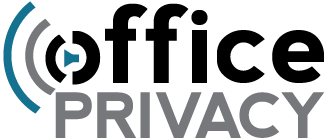FAQs Sound Masking
Get the answers to the questions our team are most often asked.
Is this white noise?
No, but yes. Technically speaking, the Qt Quiet technology™ sound frequency spectrum is different from white noise. This system is specifically engineered to contain the same spectrum as human speech. However, to the untrained ear, this system is the same as white noise. If someone is seeking a white noise system for their workspace, they are looking at the right product!
Is this noise cancellation?
No. Contrary to popular opinion, there is no “active noise cancellation” or “sound elimination” device on the market for large commercial spaces. These technologies exist for small, localized applications like headphones, but not for large commercial spaces. Cost considerations and the principles of physics prevent a large-scale noise cancelling system from being a viable option in any workspace.
For what applications is sound masking useful?
Sound masking can improve acoustical comfort in just about every industry and environment, but spaces that benefit the most include:
- Cubicles and Call Centers – reduce distractions and increase productivity
- Private offices – confidential speech privacy is desired
- Patient rooms – enhance patient comfort and privacy
- Libraries – reduce distractions caused by the lack of background noise.
- Lobbies – prevent overheard conversations from adjacent work areas
Does sound masking go in conference rooms?
Sometimes. Sound masking is more commonly installed outside of conference rooms to prevent people in the hallway (or adjacent space) from overhearing confidential conversations. The exceptions to this rule are if the sound proofing of the conference room walls is poor, or if the conference room doubles as a place for people to take tests or perform other activities requiring concentration. In that case, the conference room could have its own zone of sound masking and easily turn the system on/off as needed.
Will this system reduce server room noise?
No. Sound masking typically falls in the 40-48 decibel range. The sound is designed to blend into the workspace. A typical server room is upwards of 80 decibels, so it’s actually its own form of sound masking (although an irritating one for many)! If sound masking were added to a server room, the noise from the servers would actually cover the masking sound. A space like this can benefit from added sound absorption and increased acoustic isolation from surrounding wall and ceiling constructions, but not from sound masking.
